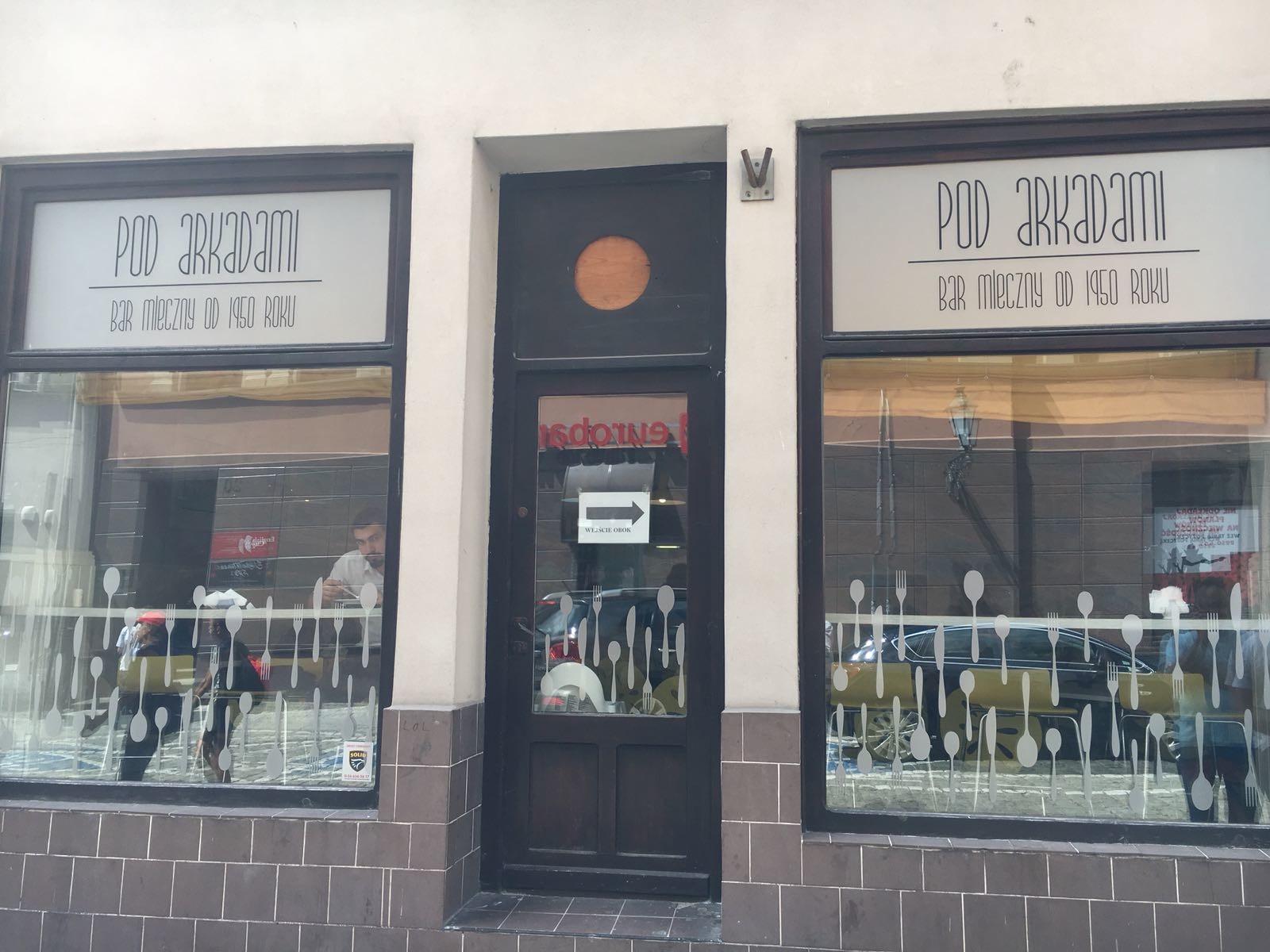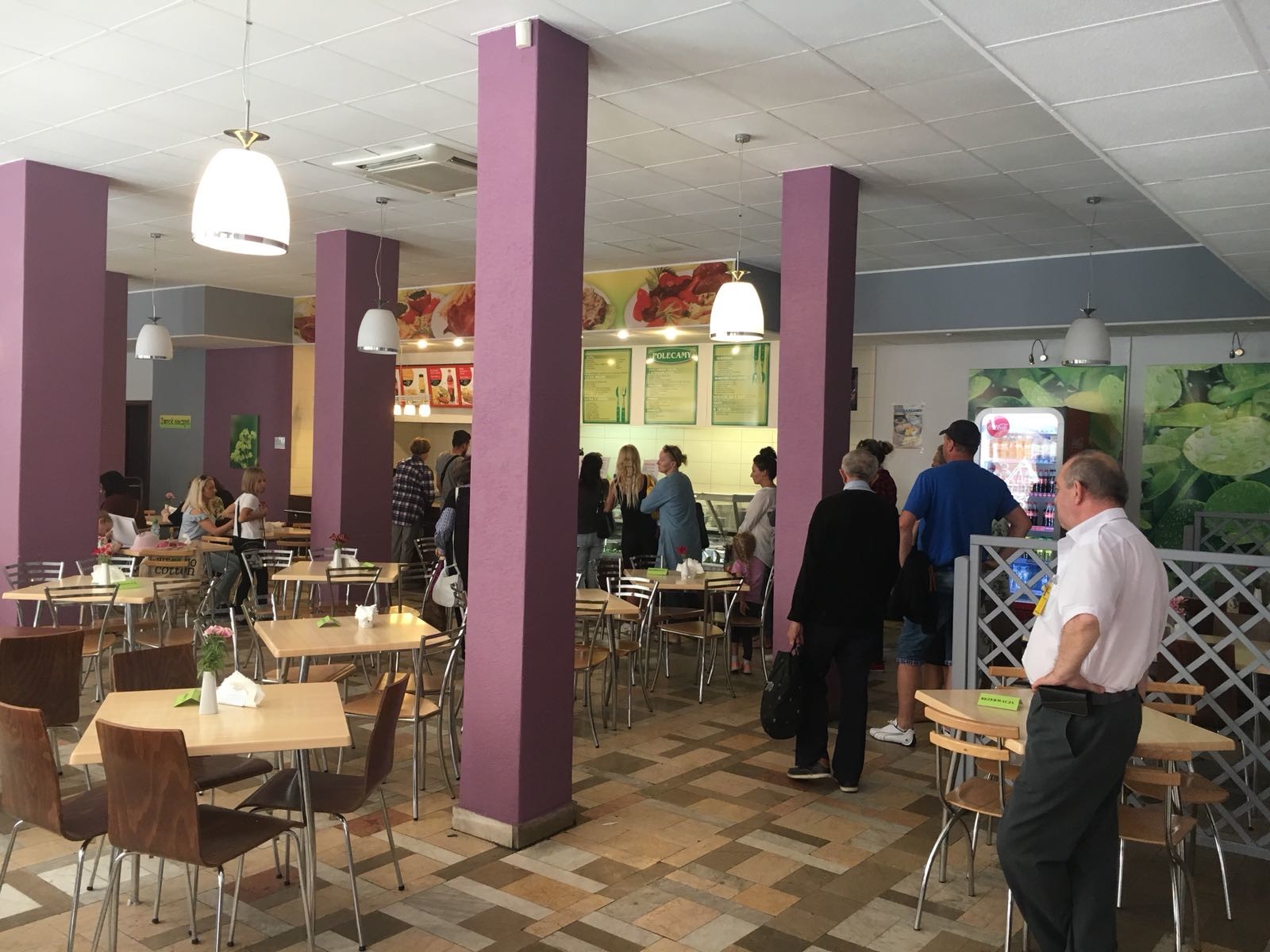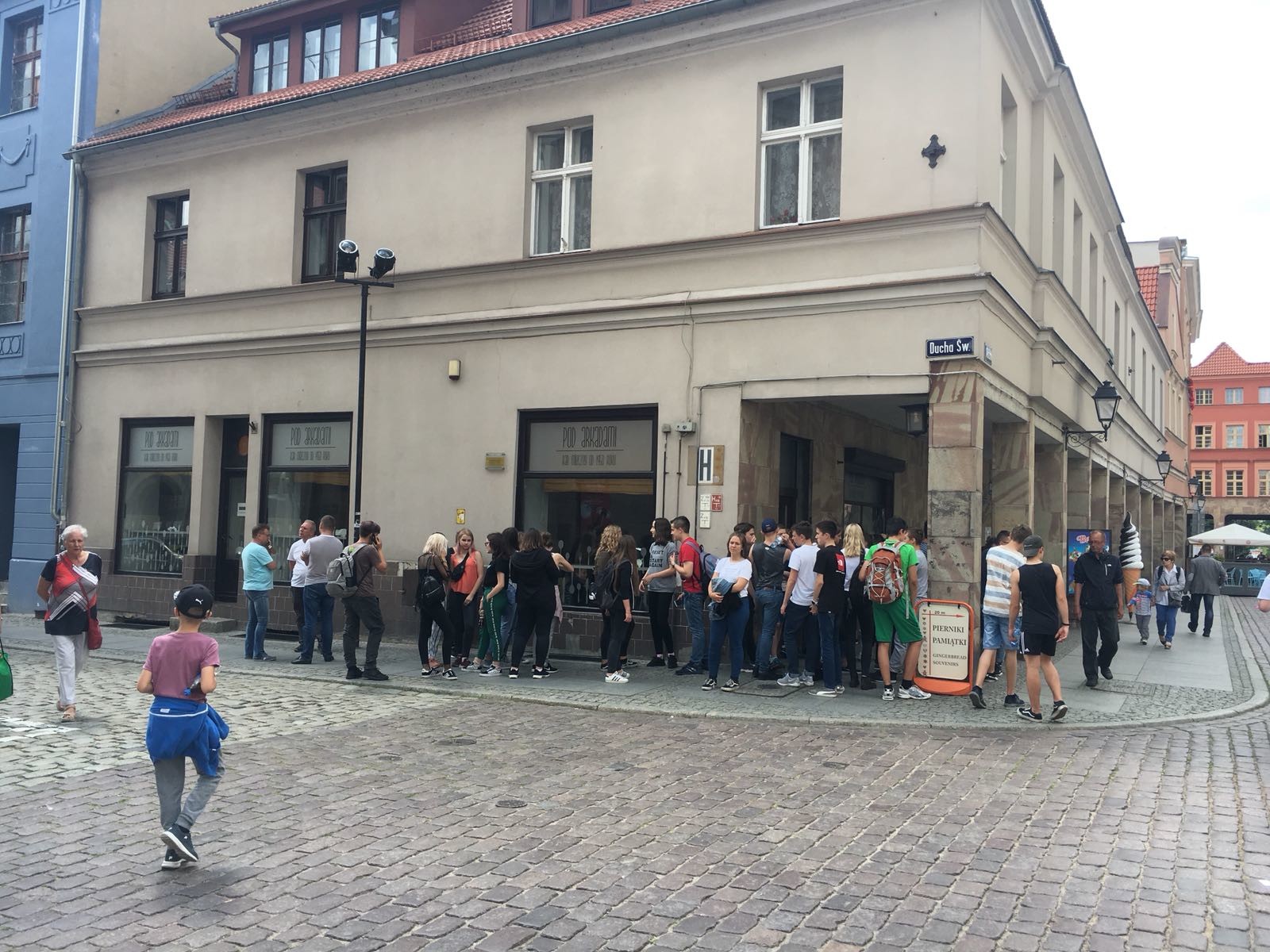We’re quite ashamed of them. No one really talks about them. I am sure that on a guided tour around any Polish city nobody will show you those. Nobody will invite you there.
As if they never existed.
Yet, these are some of the most unique food places I could think of. Places where you can meet a university professor and a beggar having meal at the very same table. A strange combination of a restaurant, a fast food, a canteen and an inn.

Milky bars, or bary mleczne as we call them in Poland.
Do you remember the KOROVA milky bar from the Clockwork Orange? Well, the ones in Poland never looked like anything from Stanley Kubrick’s imagination, but they had their own charm. Well, they look better now, but in the past the charm was more like the dark magic spell. There is a reason why some people might be just a teeny-weeny bit ashamed of showing you these places. It is very likely that in their heads they still remember the ambience of the legendary bar mleczny from the iconic comedy “Miś”.*
This is not true. You can breathe now. These are not the same miserable and grim places full of dirt and thugs, as presented in the Bareja’s film. They’ve gotten far more civilized and we do have Health and Safety working in Poland, so there is nothing to be scared of.

However.
Regardless of the refurbishments, beneath the new shiny floors and painted walls, there is still the spirit of bary mleczne. These are still the cheapest places to eat around, they offer quintessentially Polish cuisine, and the menus is quite wide with all types of Polish soups like żurek, barszcz, pomidorówka, ogórkowa, and chłodnik litewski, have one of the mains like schabowy, naleśniki, mielone, gołąbki, or żeberka, and desserts with the bar mleczny classics like galaretka, budyń or kompot. In fact, here you can spend $5 and enjoy a full 3-course dinner with a drink. That’s why they’ve been so successful.
Also, they were always meant to and still are open to anyone, school trips, academic lecturers, and homeless. All are bound to be treated equally. There is a whole division of ladies, specially trained to be front of the house of each of the bar mlecznys. Trust me, these are not type of women you’d like to argue with. They’ve got brains, they’ve got wit and razor-sharp responses to any complaint, return or comment. Even if they never left your mouth and you only thought them. They’ve got some mind reading skills. They do not have to speak English. You will get what you want. Trust me. Even if you didn’t want it, you want it now. They are the food industry wizards.
That’s why I recommend going to bary mleczne. It’s cheap, it can be really good, and you might come across a situation that no university would be able to prepare you for. After one visit you can have more employability skills than after a whole course by Morgan Stanley.

As a demo, have a look at my favourite example below:
A young lad enters a bar mleczny, after queuing for five minutes he comes to a counter and goes:
‘I’d like to have a de volaille and chips please.’
The lady from behind the counter looks at him for a while, and with a sparkle in her eye she breaks the uncomfortable silence
‘So do I, luv.’

Glossary and some extra facts about bary mleczne
First of all don’t expect it to be a Michelin star rated dining place, it is rather a good value for money fast food. Yes, they use microwave quite often. Regardless of that the food still can be brilliant.
*‘Miś’ by Stanisław Bareja is one of the most, if not THE MOST, iconic Polish comedies of all times. I would recommend watching it with a Polish native, who knows about the film setting and the times it was made. The use of grotesque caricaturing the paradoxes of living in People's’ Republic of Poland (PRL), it is the communist state from the 80s is just too good to handle. Even though the film was released 37 years ago, people still quote the lines from the dialogues in everyday life.
When it comes to the pronunciation of bary mleczne… I can’t really help you, unless you know the IPA chart.
Pomidorówka - a taste of childhood for every Pole. Tomato soup with either rice, potatoes, or noodles. Different in each household, everywhere equally brilliant.
Ogórkowa - a surprise for many, a sour soup made of...welll...there is no other way than to say it straight: fermented cucumbers. But don’t be scared! It tastes like nothing you tried before, but it very much might be your favourite soup in the world.
Żurek - one of the most impressive soups that is actually tremendously popular amongst international tourists. It is a soup made of...and again...fermented bread, very often served in bread, with a hard-boiled egg and a sausage. I’ve heard countless times of how much people who visited Poland loved it, so I reckon it’s a must-eat dish.
Chłodnik litewski - a cold (!) soup made of young beetroots (!) and served with kefir (type of yogurt) , garlic and hard-boiled eggs. It’s a huge extravaganza to mix all those tastes, but I must admit there is nothing better than chłodnik for hot summer days. Do you dare to try it?
Barszcz - a beetroot soup served with vegetables (and then called barsz ukraiński) or with a type of pierogi called ‘uszka’ (lit. ears, but they’re 100% vegetarian). How can you not love barszcz?
Schabowy - probably the most popular Polish dish and an emblematic symbol of Polish cuisine (at least for most of Poles). A pork loin covered in breadcrumbs and fried until golden.
Naleśniki - Polish version of pancakes. Slightly thicker than French crepes, served savoury or sweet.
Mielone - a Polish adaptation of burgers, usually made with pork minced meat, and served with boiled potatoes and salad (no bread).
Gołąbki - a cabbage masterpiece: minced meat, seasoned with spices, mixed with cooked rice, and wrapped in cabbage leaves. Then they are slow-cooked in a tomato sauce until soft. Something you’ll love from the first bite.
Żeberka - ribs, usually baked and served with kiszona kapusta (similar to German sauerkraut, a type of soured cabbage).
Budyń - a type of custard often served cold and available in different flavours: chocolate, vanila, cream.
Kompot - a legendary drink made of Fresh fruit, the most refreshing summer drink possible.
